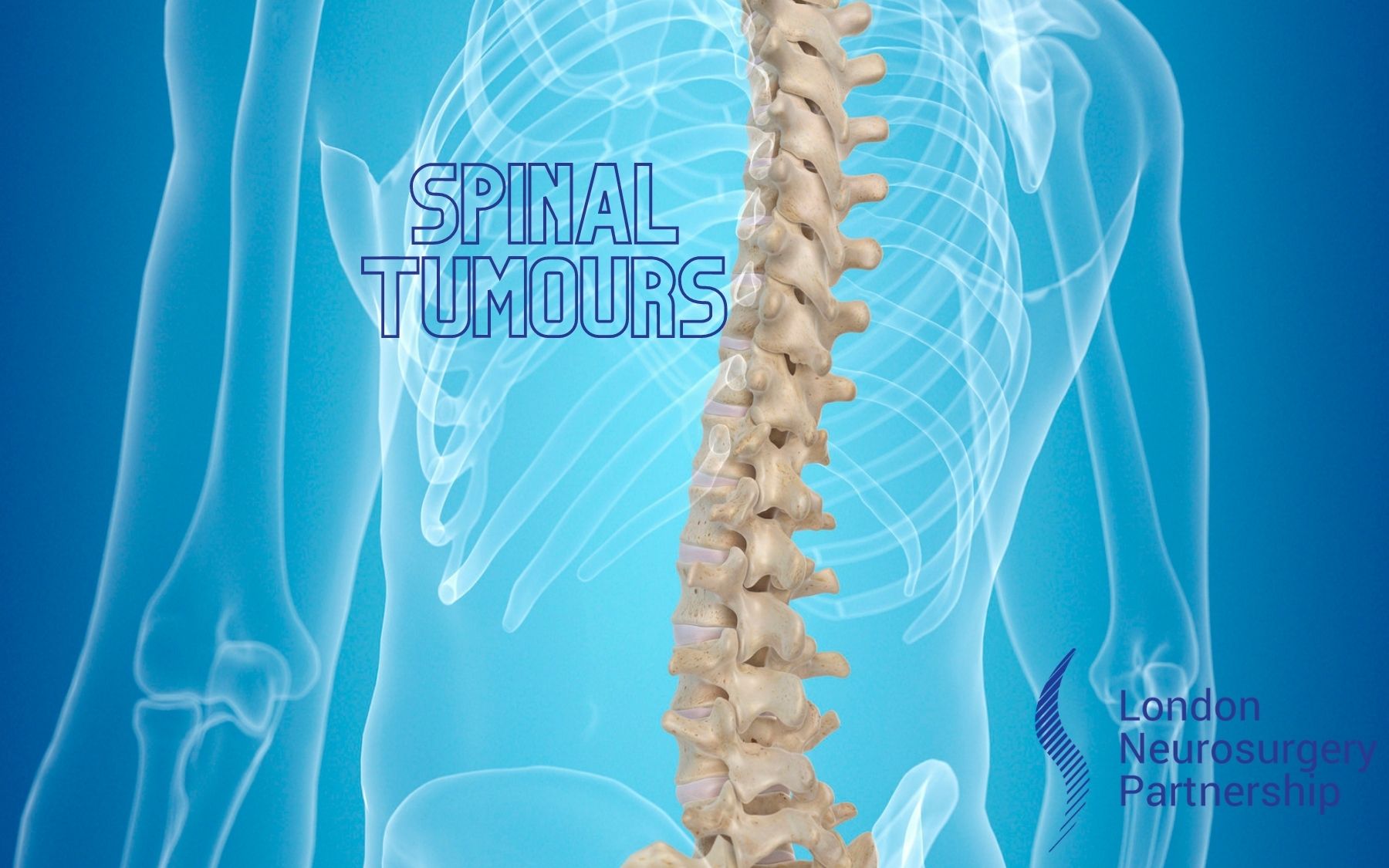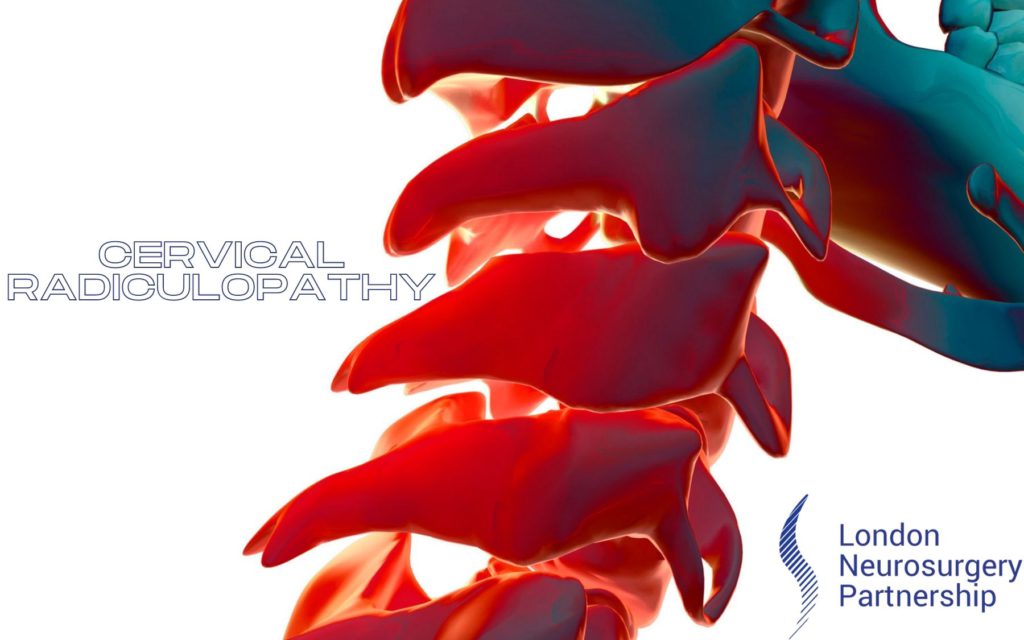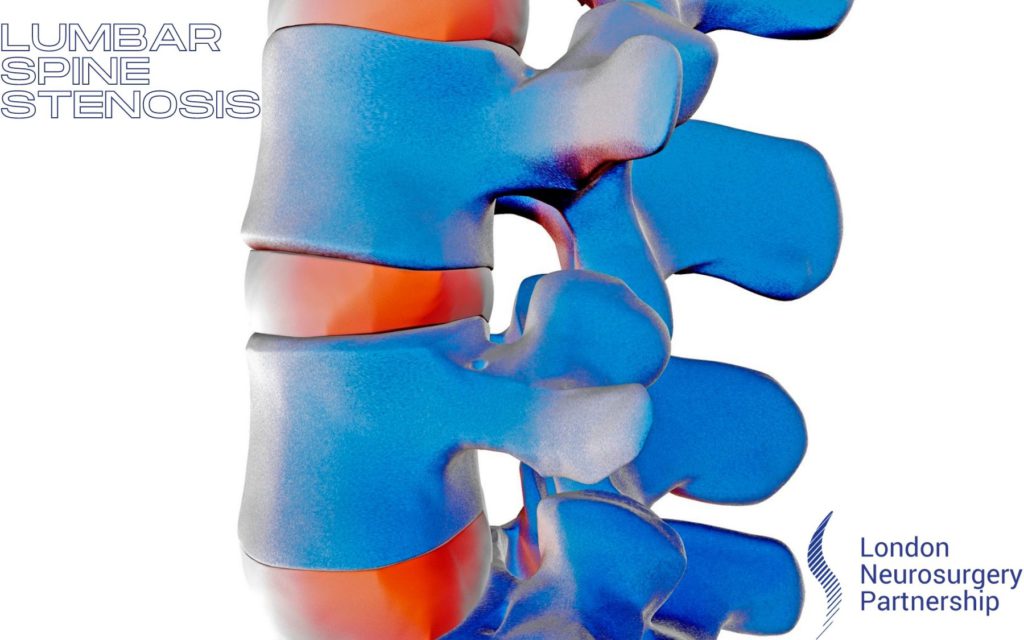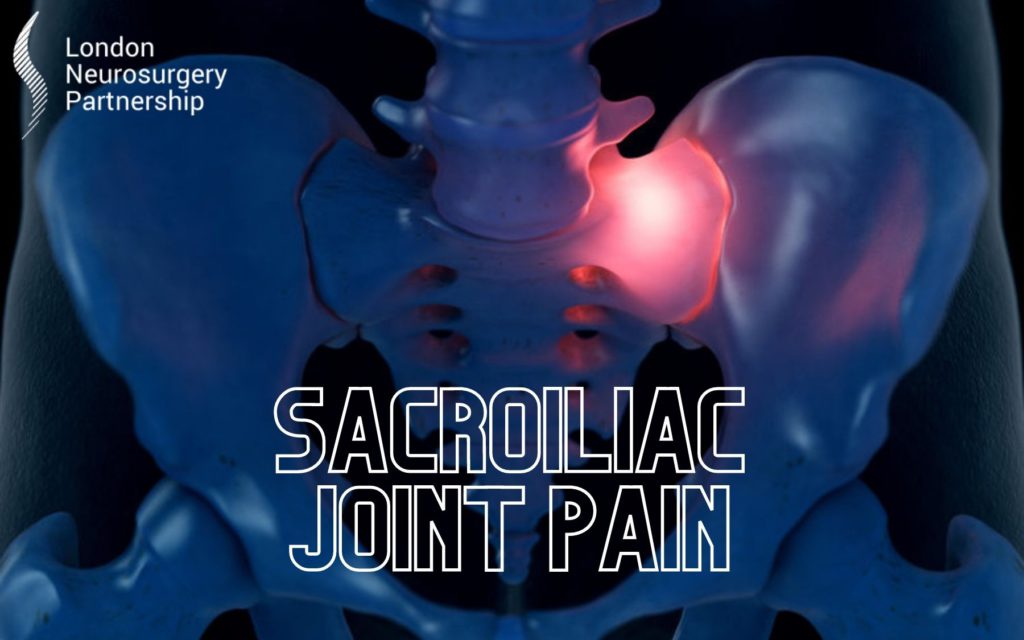
Spinal tumours are an abnormal mass or growth of tissue in or around the spinal cord or bones of the spine. Spinal tumours can be either non-cancerous (benign) or cancerous (malignant). These tumours can also be defined as primary – they originate in the spine or spinal cord – or secondary – they are the result of a cancer elsewhere in the body spreading to the spine.
Spinal tumours can occur in the cervical (neck), thoracic (mid) or lumbar (lower) spine as well as the sacrum (the base of the spine).
When describing the location of these tumours in more detail the following descriptions can be used:
- Intradural-extramedullary: Here the tumour is found inside the dura but outside the spinal cord itself. The dura is the thin membrane around the spinal cord, containing cerebrospinal fluid (CSF). These tumours account for about 40% of all spinal tumours and the most common are meningiomas (in the arachnoid membrane of the dura). Tumours in the nerve roots exiting the spine are known as schwannomas and neurfibromas whilst the tumours at the base of the spinal cord are called filum terminale ependymomas. Whilst meningiomas are mostly benign they can cause neurological problems simply due to their location and pressure on the spinal cord as well as being challenging to remove for this reason as well. It is also possible for meningiomas to recur.
- Intramedullary: These are tumours found inside the spinal cord. These begin from glial or ependymal cells found throughout the spinal cord. These tumours account for about 5% of all spinal tumours with the most common types being astrocytomas (usually in the cervical or thoracic region of the spine) and ependymomas (usually at the base of the spinal cord). A very rare type of intramedullary spinal tumour is a lipoma – these are congenital and usually located in the lower cervical, upper thoracic region of the spine.
- Extradural: These tumours are found outside the dura and account for about 55% of all spinal tumours. They are usually linked to metastatic disease or less commonly schwannomas.
Tumours arising the bones of the spine – vertebrae – are usually a result of bone metastases. This means that patients with cancer in other areas of the body can develop secondary cancers in the spinal bones. The most common cancers to result in spread to the spinal bones are breast, lung and prostate cancer. Rapid diagnosis and identification of the primary location is key to successful treatment.
Primary spinal bone tumours are rare and usually benign and usually don’t even cause symptoms – they are called vertebral haemangiomas.
Symptoms of spinal tumours
The most common symptom is non-mechanical back pain i.e. the back pain is not linked to movement, injury or a specific action. This back pain is often worse when lying down at night. Other signs and symptoms can vary depending on the size, location and type of tumour but are usually linked to compression of the spinal cord or associated nerve roots and blood vessels.
These symptoms can include:
- Muscle weakness in the arms or legs
- Stiff neck or back
- Pain, tingling, numbness
- Difficulty walking
- Reduced sensitivity to pain, heat and the cold
- Paralysis in parts of the body associated with affected nerves
- Loss of bladder or bowel function
Diagnosis
This is usually through radiological tests such as X-ray, CT, MRI and/or bone scan.
Treatment
Non-surgical treatments such as chemotherapy or radiotherapy may be indicated in some cases particularly in asymptomatic patients. Surgery may be more beneficial for other patients who are experiencing symptoms. The aim is to reduce spinal cord compression and reduce or alleviate symptoms whilst oncology care continues for these patients. The complex nature of the care of these patients means that the approach and decisions about the treatment pathway is discussed at an MDT (multidisciplinary team meeting) bringing together all the specialists involved in the care.
This article is intended to inform and give insight but not treat, diagnose or replace the advice of a doctor. Always seek medical advice with any questions regarding a medical condition.






0 Comments